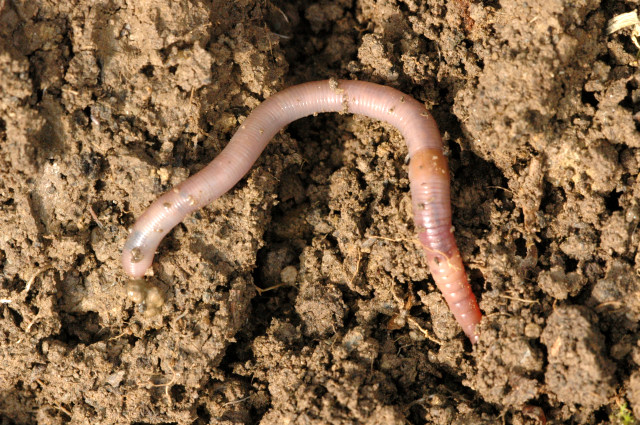Ditchers par excellence
Smooth, long and thin is the earthworm and it prefers to live in the first eight inches of soil under our lawn. There the earthworm is spared by the digging gardener and is protected by the same gardener against its greatest enemy, the mole. The most common type of earthworm in our garden is the Lumbricus terrestris. An adult specimen measures thirty centimeters and has more than one hundred and fifty rings. The color of a healthy worm is pink to reddish brown. The front is round and that’s where the mouth is; the back is flat. A third of the length from the head is a band that is important for the reproduction of the worm.
Earthworms can live up to ten years and you wouldn’t expect that. A lost head or tail piece can regrow. The earth
Earthworms reproduce by laying eggs. It takes five months for a young worm to hatch from the egg and then the worm needs another year and a half to mature.
Every garden has earth
The worm army is able to completely replace the top two inches of garden soil with ‘worm’-processed soil within a few years. Stones that were once on the surface have therefore sunk five centimeters below the surface.
The Gardener and the Earth
Frequent digging between the plants and ruthlessly keeping the garden surface ‘clean’ do not provide ideal living conditions for the earth
The presence of a compost bin is a big step towards a healthy worm population. The worms multiply quickly in such a hotbed full of organic waste, so that they can also carry out their good works elsewhere in the garden.
See also: Earthworm

